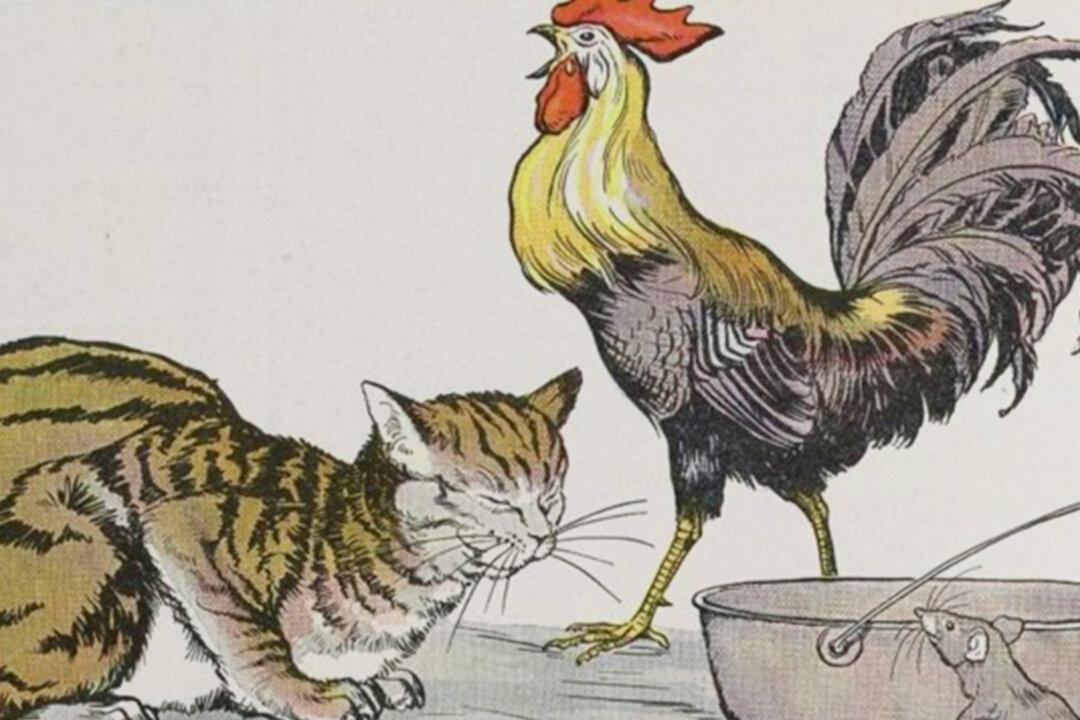A very young mouse, who had never seen anything of the world, almost came to grief the very first time he ventured out. And this is the story he told his mother about his adventures.
“I was strolling along very peaceably when, just as I turned the corner into the next yard, I saw two strange creatures. One of them had a very kind and gracious look, but the other was the most fearful monster you can imagine. You should have seen him.






